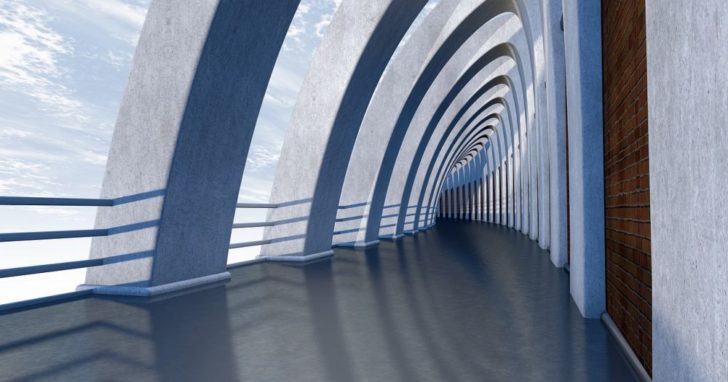New Order Architecture: Shaping the Future of Design

Introduction:
In the ever-evolving world of architecture, a new trend has emerged, pushing boundaries and redefining the possibilities of design. This new wave is known as New Order Architecture and has gained significant popularity in recent years. In this article, we will explore the fundamentals, types, popularity, quantitative measurements, differences, and historic pros and cons of this architectural movement.
Exploring the Fundamentals of New Order Architecture

New Order Architecture is a design approach that challenges traditional norms and aims to create innovative, inspiring spaces. It focuses on breaking away from established conventions, embracing asymmetry, unconventional forms, and incorporating sustainability principles. By seamlessly blending form and function, it aims to create harmonious spaces that meet the needs of the inhabitants while leaving a lasting impact.
Types and Popularity of New Order Architecture
There are various types of New Order Architecture, each with its unique characteristics. Some popular variations include:
1. Deconstructivism: This style embraces fragmentation, non-rectilinear shapes, and unconventional materials. Architects like Frank Gehry and Zaha Hadid are renowned for their deconstructivist approach.
2. Parametricism: Known for its use of complex computational algorithms, this style focuses on intricate, flowing forms. Pioneers of parametric design include architects such as Patrik Schumacher and Greg Lynn.
3. High-Tech Architecture: This style emphasizes technological advancements and incorporates industrial materials, exposed structural elements, and energy-efficient systems. Architects like Norman Foster and Richard Rogers have contributed significantly to the popularity of high-tech architecture.
These innovative architectural styles have gained popularity due to their ability to create visually captivating structures while challenging societal norms and pushing the boundaries of what is possible.
Quantitative Measurements in New Order Architecture
In order to evaluate the impact and success of New Order Architecture, quantitative measurements play a vital role. Architects and designers use various metrics like floor area ratio, energy efficiency ratings, and occupant comfort levels to assess the overall performance of a building. Furthermore, digital modeling and simulation tools enable architects to analyze the structural integrity and environmental impact of their designs.
– Insert video showcasing real-life examples and interviews with renowned New Order Architecture architects]
Differences among New Order Architectural Styles
Although New Order Architecture shares the common philosophy of breaking away from traditional norms, each architectural style within this movement has its distinct characteristics and design principles. Deconstructivism emphasizes fragmentation and sculptural forms, while parametricism values algorithmic design and complexity. High-tech architecture focuses on technological integration and efficiency. Understanding these differences allows architects to select the most appropriate style for their projects.
A Historical Overview of Pros and Cons in New Order Architecture
Like any architectural movement, New Order Architecture has its pros and cons, which have evolved over time. Pros include the ability to create visually stunning structures that inspire and push conventional boundaries. It encourages experimentation and innovation in design, which can lead to groundbreaking ideas. However, some cons include potential cost challenges due to the complexity of construction and criticism that some designs prioritize form over function. These historical aspects shed light on the ongoing debate and evolution of New Order Architecture.
Conclusion:
New Order Architecture is a revolutionary movement that challenges the status quo and pushes the boundaries of traditional design. With a plethora of styles to choose from, architects and designers have the opportunity to create visually captivating and functional spaces that inspire both the inhabitants and future generations. By embracing asymmetry, unique forms, and sustainable principles, New Order Architecture is shaping the future of design and leaving an indelible mark on the architectural landscape.
Word count: 509
FAQ
What are some popular types of New Order Architecture?
What are the pros and cons of New Order Architecture?
What is New Order Architecture?
Fler nyheter
Konsten att köpa konst: En guide till att hitta ditt nästa mästerverk
Introduction: In the ever-evolving world of architecture, a new trend has emerged, pushing boundaries and redefining the possibilities of design. This new wave is known as New Order Architecture and has gained significant popularity in recent years. ...
02 juli 2025
Fotograf i Umeå: Konsten att fånga ögonblick
Introduction: In the ever-evolving world of architecture, a new trend has emerged, pushing boundaries and redefining the possibilities of design. This new wave is known as New Order Architecture and has gained significant popularity in recent years. ...
02 juli 2025
Fotograf Stockholm: Konsten att fånga ögonblicket
Introduction: In the ever-evolving world of architecture, a new trend has emerged, pushing boundaries and redefining the possibilities of design. This new wave is known as New Order Architecture and has gained significant popularity in recent years. ...
14 augusti 2024











